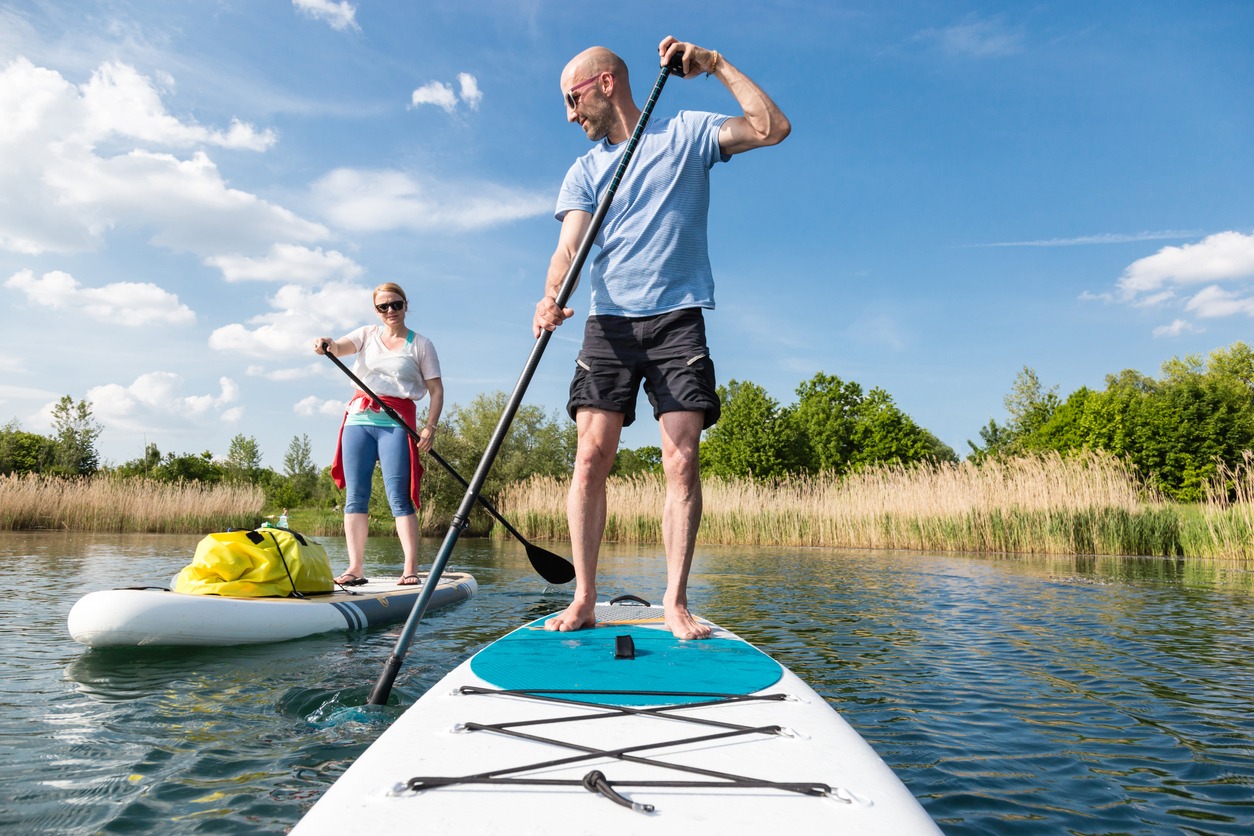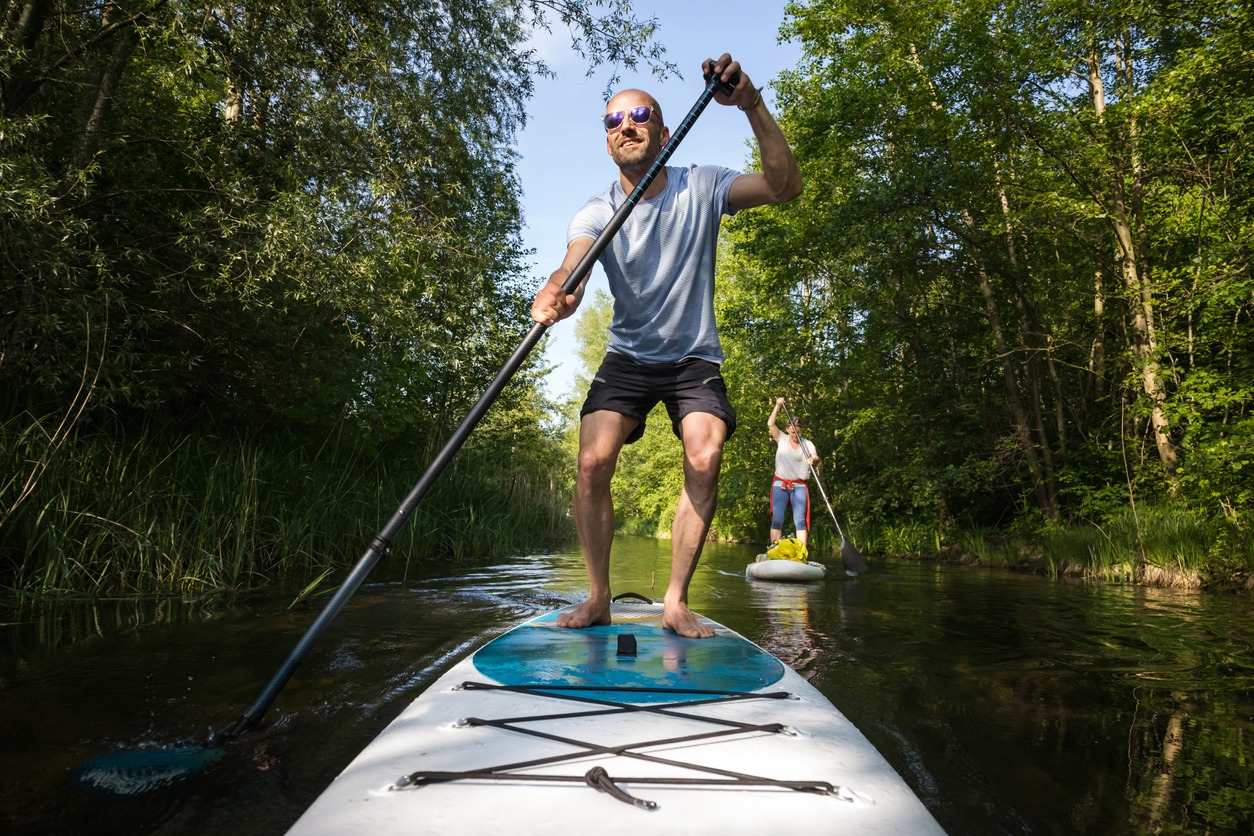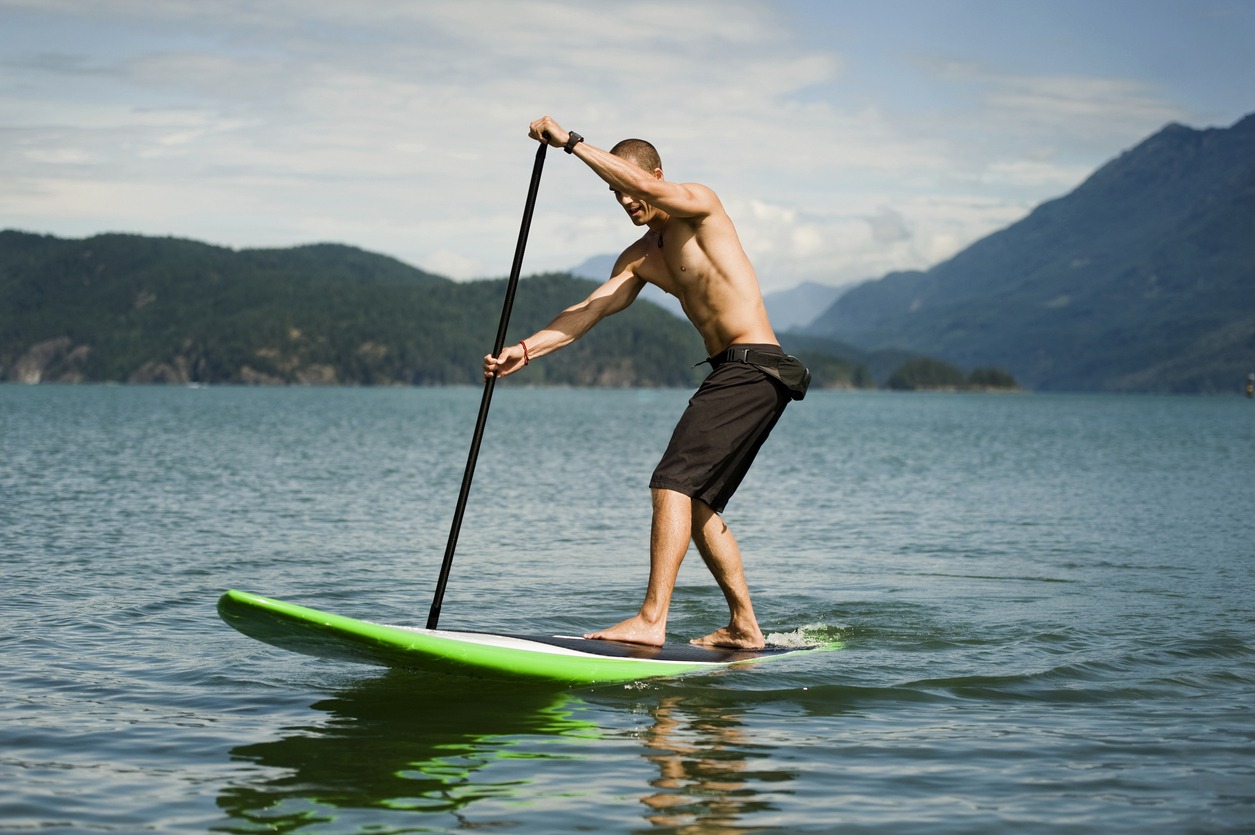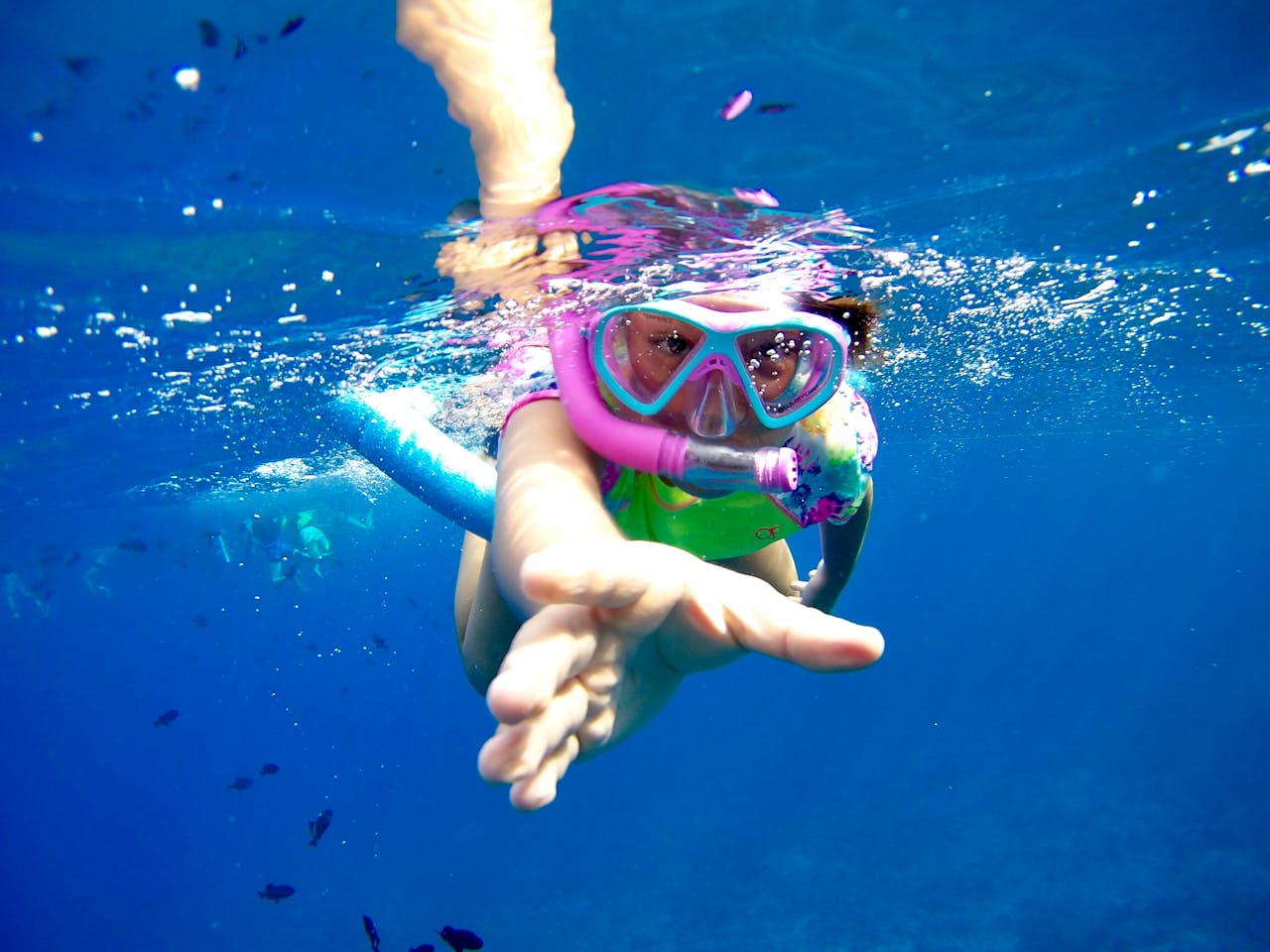Can a Dog Go Paddleboarding? Tips for Bringing Pets Along
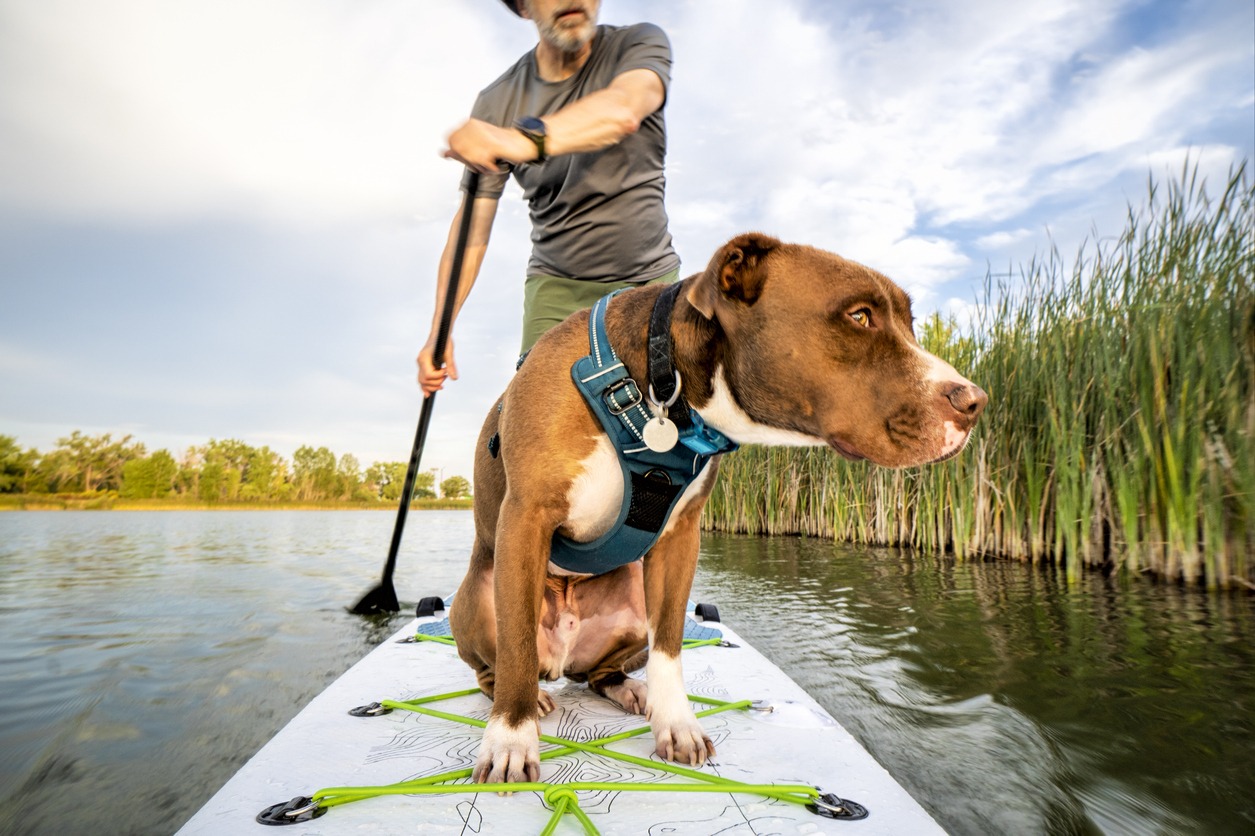
Yes, you can take your dog paddleboarding with proper preparation and equipment. Choose a stable board that can support your pet's weight and use a non-slip surface for their comfort. Prioritize safety with a dog life vest and leash. Train your furry friend on land first, teaching basic commands and board familiarity. When on the water, position your dog near the center for stability and maintain control. Start in calm waters and gradually build up to longer trips. Remember to respect other paddlers and wildlife. With the right approach, paddleboarding can be a fun activity for both you and your canine companion. There's much more to ponder for a safe and enjoyable experience.
Choosing the Right Paddleboard
When choosing a paddleboard for your canine companion, you'll want to prioritize stability and comfort. Inflatable paddle boards are an excellent choice, providing a stable surface that's gentle on your dog's paws. However, rigid boards can work well too, especially if you add a deck pad for extra grip and comfort.
Consider the board size and weight capacity attentively. You'll need a paddle board that can support both you and your furry friend comfortably. Ensure there's enough space for your dog to stand, sit, or lie down without feeling cramped or unstable. Longer boards provide superior stability but require more effort for turns, which may be important to reflect on when bringing a dog along.
A non-slip surface is vital for your dog's safety. Look for boards with textured decks or add a non-slip mat to prevent your pup from sliding around. This feature is particularly important when the board gets wet.
Don't forget about gear for both you and your dog. Life jackets are essential for safety, even if your dog is a strong swimmer. Consult a dog trainer for tips on acclimating your pet to the board and water.
Essential Safety Gear
Safety should be your top priority when paddleboarding with your canine companion. When preparing for your stand up paddle boarding escapade, ensure both you and your dog are equipped with properly fitted personal flotation devices (PFDs). These life jackets are crucial for keeping you both safe on the water. Bulldogs, Boxers, Dachshunds, and Pugs may struggle to swim, so a dog life vest is recommended even for breeds that can swim. Don't forget to attach a paddle board leash to keep you connected to your board in case of falls. This simple device can prevent your board from drifting away, leaving you and your dog stranded. Consider additional protective gear for your furry friend, such as paw protection to guard against hot surfaces and UV protection for sensitive skin.
Always pack a small first aid kit designed for both human and canine needs. This precaution can be a lifesaver in unexpected situations. To protect your precious and electronic items from water damage, store them in a dry bag. This waterproof container will keep your essentials safe and dry throughout your paddle boarding odyssey.
Training Your Dog
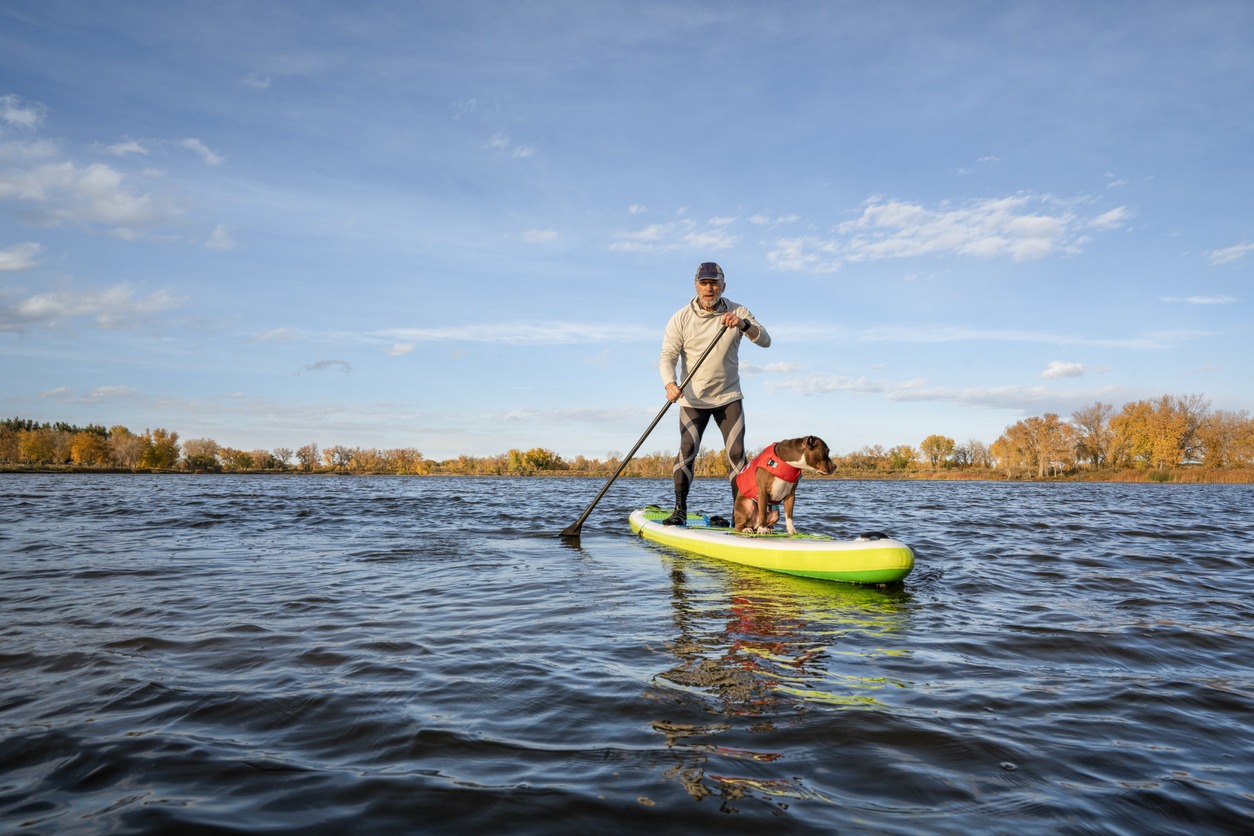
Now that you've got your safety gear sorted, it's time to focus on preparing your furry friend for the paddleboarding expedition. Start by training your dog on dry land to familiarize them with the paddleboard. This initial step helps build their comfort and confidence before venturing into the water.
Teaching basic commands like "sit," "down," and "stay" is essential for maintaining control on the board. Practice these commands regularly to confirm your dog responds reliably in various situations. Introduce your pup to wearing a life jacket gradually, allowing them to get used to the feel and fit.
Next, practice having your dog get on and off the paddleboard. This skill is vital for handling unexpected situations on the water. As you progress, slowly introduce your dog to shallow water, gradually building their confidence in aquatic environments.
Throughout the training process, use positive reinforcement and treat rewards to create a positive association with paddleboarding. This approach will help your dog become more excited and comfortable with the activity. Remember to be patient and consistent in your training efforts, as each dog may progress at a different pace.
Boarding Techniques
The art of boarding a paddleboard with your canine companion requires finesse and careful planning. When it's time to get on the boards, position your dog near the center for maximum stability. This placement helps distribute weight evenly and keeps you both balanced.
Before you stand, secure your furry friend with a leash or [restraint] attached to the board. This prevents them from falling off if they get excited or spooked. For added safety, especially if it's your dog's first time, consider using a Float Coat life jacket designed for canines.
As you prepare to stand, maintain a low center of gravity by bending your knees and engaging your core. This technique will help you stay steady as you adjust to your dog's presence on the board. Once you're up, use smooth, controlled paddle strokes to minimize sudden movements that could unsettle your pup.
To enhance your dog's grip on the board, consider using a non-slip surface or traction pad. This will provide better footing for your four-legged friend, making the experience more enjoyable and secure for both of you. Remember, a dry run on land can help your dog get comfortable with the board before hitting the water.
On-Water Etiquette
While enjoying the serenity of paddleboarding with your canine companion, it's crucial to practice proper on-water etiquette. When taking your dog along, make sure you're using the right board and have all the essential gear you'll need. Respect other paddlers and watercraft by keeping your dog under control and maintaining a safe distance. Follow local regulations regarding pets on waterways and in protected areas to guarantee you're paddling responsibly.
Be mindful of wildlife and the environment:
- Avoid disturbing birds nesting or marine life by keeping a respectful distance
- Clean up any waste or debris left by your dog to maintain a clean environment
- Be courteous when passing others, providing ample space and slowing down
If your dog jumps or falls off the paddle board, remain calm and guide them back to shallow water. It's important to have the proper Gear for Paddle Boarding with your furry friend, including a life jacket for your dog. Practice in calm waters before venturing out, and teach your dog to jump on and off the board safely. By following these guidelines, you'll ensure a pleasant experience for everyone on the water.
Managing Pet Comfort
To safeguard your furry friend enjoys paddleboarding as much as you do, managing their comfort is imperative. Start by selecting a paddleboard that's suitable for your dog's size and weight, ensuring they have enough space to move around comfortably. Make sure the board has a full deck pad to provide a stable, non-slip surface for your pet.
Introduce your dog to the paddleboard gradually, allowing them to become comfortable with the board on land first. Use treats and positive reinforcement to reward your dog for stepping onto the board and staying calm. Once they're comfortable, slowly shift to the water.
You'll need to bring essential gear to keep your pet safe and comfortable. A well-fitting life jacket is indispensable, even for strong swimmers. Don't forget sunscreen for exposed areas and paw protection to prevent burns from hot surfaces. Allow your dog frequent breaks to rest, hydrate, and cool off.
Watch for signs of fatigue or distress in your pet. If they seem uncomfortable or anxious, it's best to end the session and try again another day. With patience and practice, your dog can become comfortable and confident on the paddleboard, making it a fun activity for both of you.
Dealing With Emergencies
Despite careful planning, emergencies can still occur while paddleboarding with your dog. It's vital to be prepared for situations like your dog jumping off the board or accidentally hitting the water. Have a plan to retrieve your furry friend, such as using a flotation device or leash. Know how to safely get your dog back on the board, considering weight distribution and providing a secure grip for your dog's paws.
Energetic dogs might jump right into the water for a dip, so practice emergency procedures in a controlled environment before venturing out. Familiarize yourself with these steps:
- Stay calm and assess the situation
- Use a flotation device or leash to secure your dog
- Guide your dog back to the board, helping them climb on safely
Be prepared to provide first aid if your dog sustains any injuries while paddleboarding. Keep local emergency services' contact information readily available. By practicing these safety measures and being aware of potential risks, you'll be better equipped to handle unexpected situations and guarantee a fun, safe paddleboarding experience with your furry companion.
Best Locations for Dog Paddleboarding
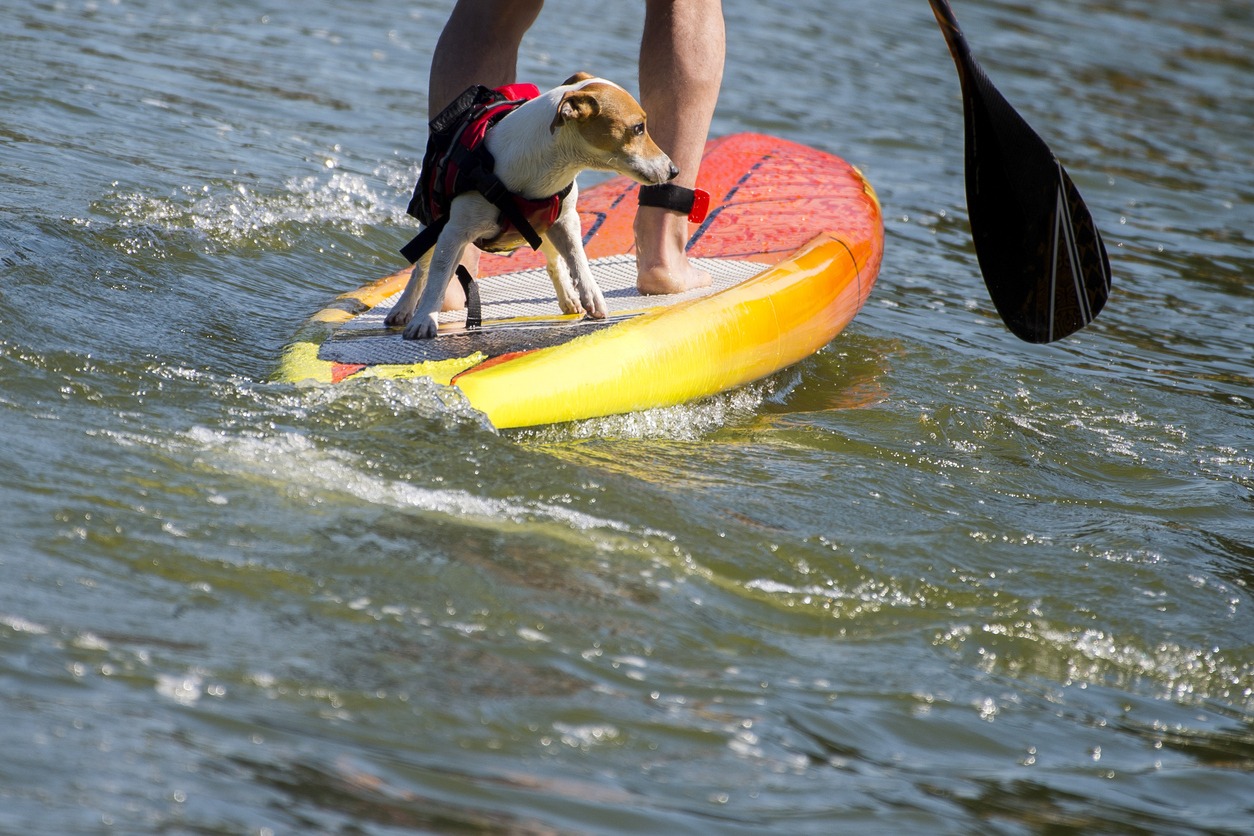
Now that you're prepared for emergencies, let's focus on choosing the perfect spot for paddleboarding with your dog. Calm, flat waters are ideal for your canine companion's safety and comfort. Look for slow-moving rivers, protected bays, or tranquil lakes that offer a stable environment for both you and your pet.
When selecting a location, prioritize areas with easy access to the water. Beaches or launch sites with ample space allow your dog to board and disembark safely. Consider the water temperature, especially during different seasons, and choose spots where your pet can readily exit the water to prevent hypothermia or overheating.
Avoid areas with strong currents, high winds, or heavy boat traffic, as these conditions can be challenging and potentially dangerous for paddleboarding with pets. Before heading out, research local regulations and guidelines regarding paddleboarding with dogs. Some areas may have specific requirements or restrictions to safeguard your pet's safety and protect the environment.
Cleaning and Maintenance
Proper care and maintenance are essential for keeping your paddleboard and pet gear in top condition. After each outing, rinse your paddleboard and any pet accessories with fresh water to remove salt, sand, and debris. This simple step helps prevent corrosion and maintain the equipment's longevity.
Periodically, you'll need to give your paddleboard a more thorough cleaning. Use a mild soap and water solution to clean the surface, which will help uphold traction and prevent discoloration. Don't forget to inspect the board's valves, seams, and other components for signs of wear or damage, repairing as needed.
When you're not using your paddleboard, store it and your pet's gear in a cool, dry place to forestall mold and mildew growth. Additionally, regularly check your dog's paws, fur, and skin for any irritation or signs of distress caused by paddleboarding.
To guarantee a safe and enjoyable experience for both you and your furry friend:
- Always rinse equipment after use
- Perform regular deep cleans and inspections
- Store gear properly and monitor your pet's health
Building a Paddleboarding Routine
How can you build a successful paddleboarding routine with your canine companion? Start by introducing your dog to the equipment and water environment gradually. Short, positive sessions will help your furry friend feel comfortable with this new activity. Teach your dog to sit on the board and use commands like "sit" or "stay" to guarantee a stable and safe experience.
Establish a consistent routine for boarding with your dog, including specific cues and commands. This structure will help your pet feel secure and confident on the paddleboard. It's a good idea to incorporate paddleboarding into your dog's regular exercise regimen, alternating it with other activities to prevent boredom and overexertion.
As you progress, monitor the dog's energy levels and body language during each session. Adjust the duration and intensity of your outings based on your pet's comfort and stamina. Consider training your dog to maintain specific positions on the board, such as sitting or lying down, to improve stability and safety. By following these steps and maintaining a positive experience, you'll create an enjoyable paddleboarding routine for both you and your canine companion.

